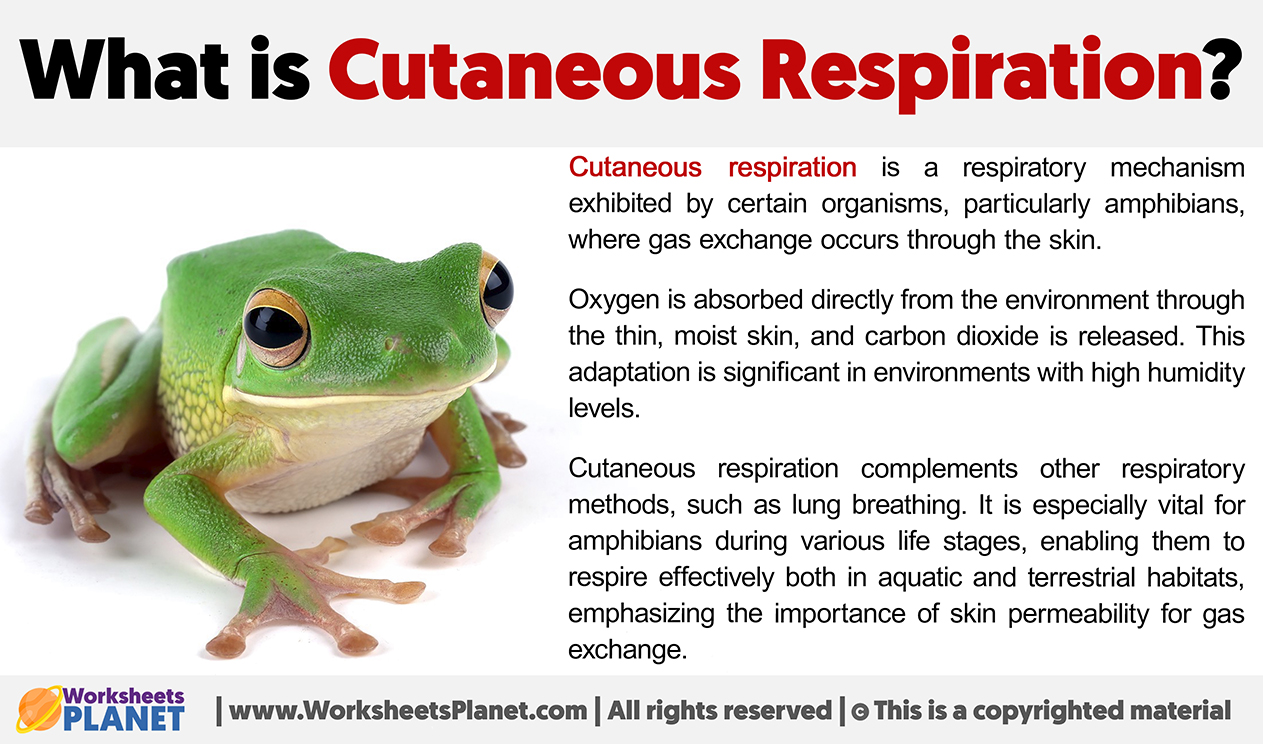Cutaneous respiration is a respiratory mechanism exhibited by certain organisms, particularly amphibians, where gas exchange occurs through the skin.
Oxygen is absorbed directly from the environment through the thin, moist skin, and carbon dioxide is released. This adaptation is significant in environments with high humidity levels.
Cutaneous respiration complements other respiratory methods, such as lung breathing. It is especially vital for amphibians during various life stages, enabling them to respire effectively both in aquatic and terrestrial habitats, emphasizing the importance of skin permeability for gas exchange.


